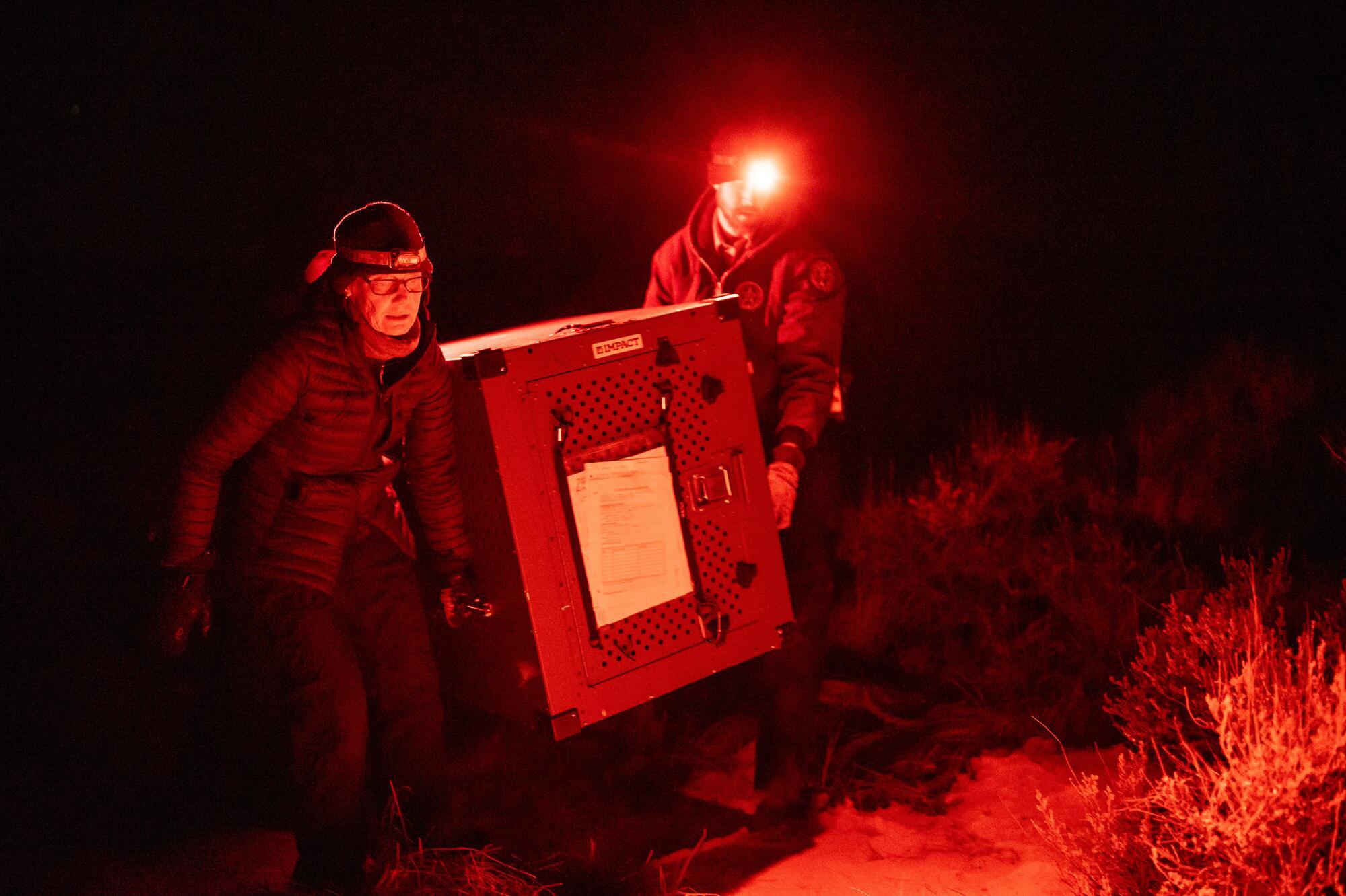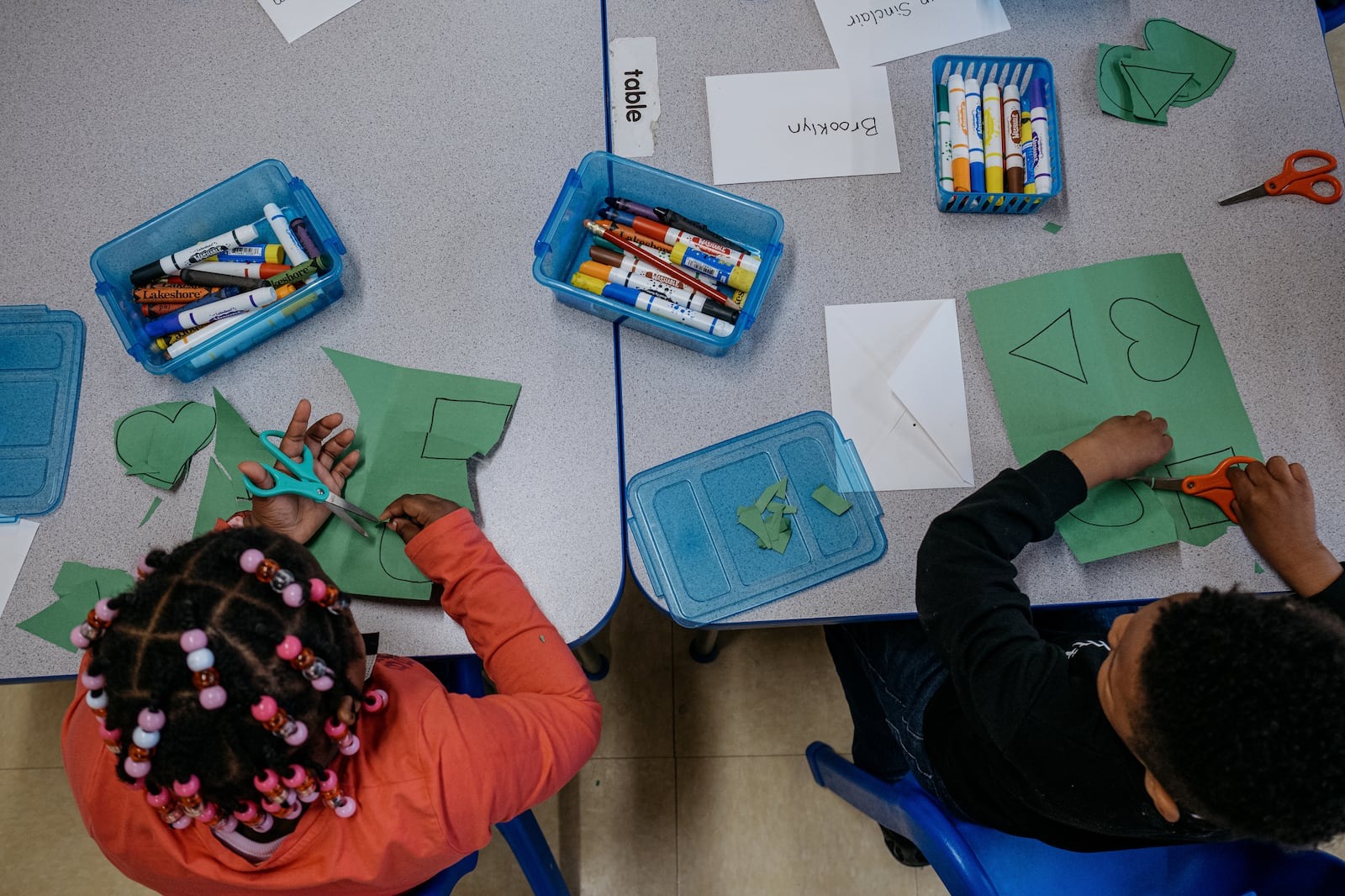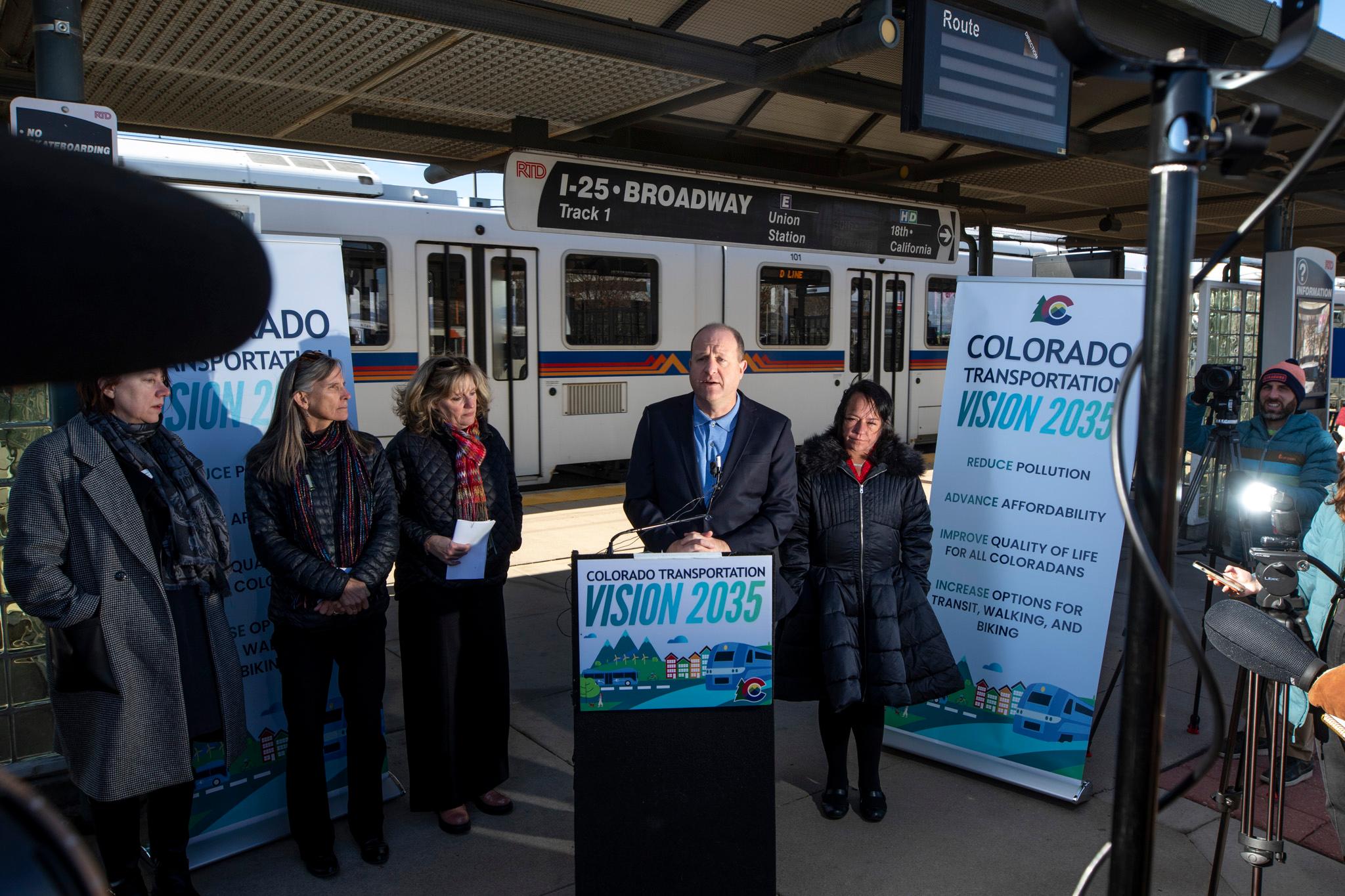
Gov. Jared Polis on Tuesday said the state needs to massively and quickly expand public transit service and make it easier for Coloradans to walk and ride their bicycles to drastically reduce its reliance on cars and slash climate emissions.
“This saves people money, reduces traffic and cuts pollution,” Polis said at a press conference where he was flanked by legislative and environmental advocacy allies. “Today, too many Coloradans simply don't have a safe, convenient alternative to driving for daily tasks, whether it's getting to work or going to the grocery store.”
Colorado has made significant progress in meeting its climate goals, but the state’s reliance on cars has made reducing transportation emissions particularly difficult despite the growing popularity of electric vehicles. The Polis Administration’s “Colorado Transportation Vision 2035” document is meant to address that shortfall and builds on several climate, housing and transportation policies and laws it’s drafted or supported in recent years.
Those include a parking reform law that could unlock denser housing development, new fees on rental cars and oil and gas drilling that will fund transit, and the abandonment of several planned highway expansions in favor of new bus rapid transit lines.
The new document’s most notable features, however, are a slate of new goals the governor said the state and its partners will work toward. Those include:
- Reducing non-automobile transportation greenhouse gas emissions by an additional 1.2 million metric tons in 2035, amounting to a 6 percent increase over its current goal
- Doubling Colorado’s non-automobile transportation trips from 9.6 percent to 19.2 percent
- Increasing bus and train service miles from the current 79 million to 145 million miles, an 83 percent increase that’s in line with a similar goal the Colorado Department of Transportation set recently
- Building 3,540 miles of new bicycle lanes, an 81 percent increase
- Creating 1,345 new miles of sidewalk, a 3.4 percent increase
- Ensuring 52 percent of new housing is built near transit lines
Environmental groups applauded the announcement. Elise Jones, executive director of the Southwest Energy Efficiency Project, said it’s “huge” to have political leaders like Polis and key legislators who are passionate and knowledgeable on how climate, transportation and housing all relate to each other.
“It means you actually get stuff done,” Jones said.
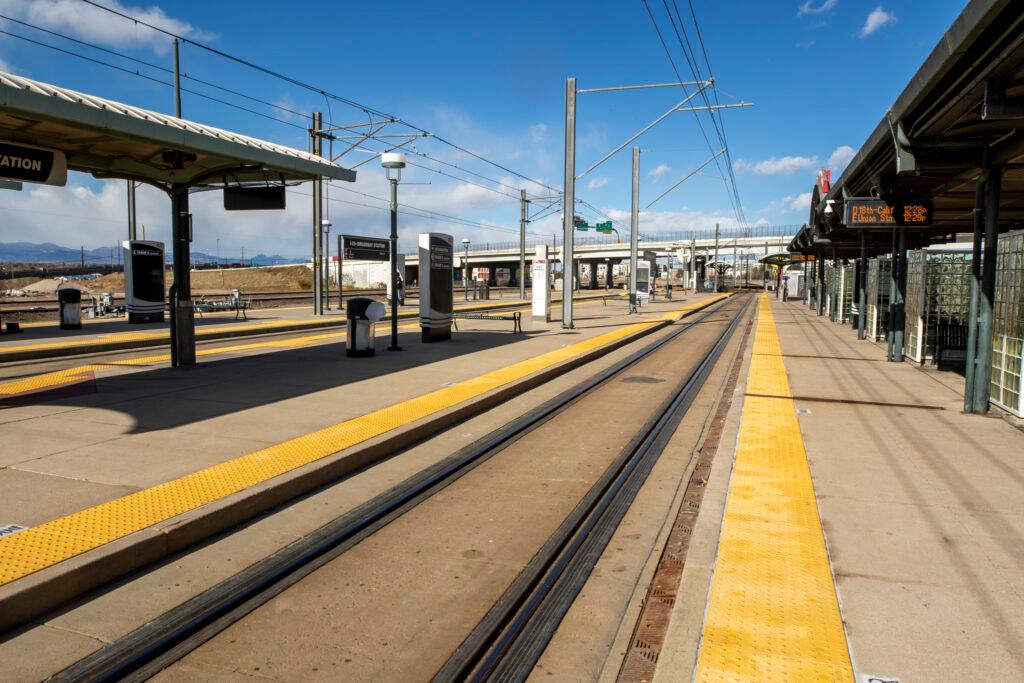
Polis said his new vision requires help from local and regional governments too, including the Regional Transportation District.
RTD and Polis have long had a testy relationship, dating back to the agency’s ongoing delay of the Northwest Rail Line promised to voters in the 2004 FasTracks plan. No RTD officials spoke at the press conference, which Polis held at RTD’s busy Interstate 25 and Broadway bus and light rail station.
Asked whether RTD, the state’s largest public transit provider, was a part of his 2035 vision, Polis told reporters that “everybody needs to be a part of this.”
“We need counties, we need cities, we need transit districts like RTD,” Polis said. “This is bigger than any one jurisdiction. And yes, it's bigger than just the state. It really is a partnership.”
Polis’ vision document specifically calls out RTD, saying it has “significantly lagged behind” its peers in other states in ridership and restoring service cut during the COVID-19 pandemic. The agency has in recent years embraced a “back to basics” strategy that has prioritized maintenance, safety and security, and staffing up its depleted front-line worker ranks.

RTD officials say that strategy is about to pay off. The agency has added more than 100 bus drivers recently and plans to increase its services by more than 100,000 “revenue hours” over 2025 — its first major service increase in years. Once-popular routes like the E and H light rail lines will see 15-minute service restored in January and some bus lines will run more frequently too.
RTD was not involved in the development of the Polis’ transportation vision document, an agency spokesperson said in a statement. But board member Lynn Guissinger of Boulder, who has chaired it in the past and was at the Tuesday event, said she thinks the relationship between RTD and the state is improving — and she hopes they can continue to work together.
“I'd love to see us bring some of the state people in to meet with us and start putting the policies and the actions in place to get to those numbers,” she said. “They're big numbers, they're aspirational, but we've got to get there. Hopefully, we can.”
It’s unclear how much help Polis will get from a new Trump administration and a Republican-controlled Congress.
The Biden administration pumped billions of dollars into passenger rail and other low-polluting forms of transportation around the country, though it spent even more on highway expansion, one report said.
Transit experts are already speculating that the incoming Trump administration will cut spending for transit and other low-carbon transportation infrastructure. The Trump transition team is reportedly targeting federally funded electric vehicle tax incentives.
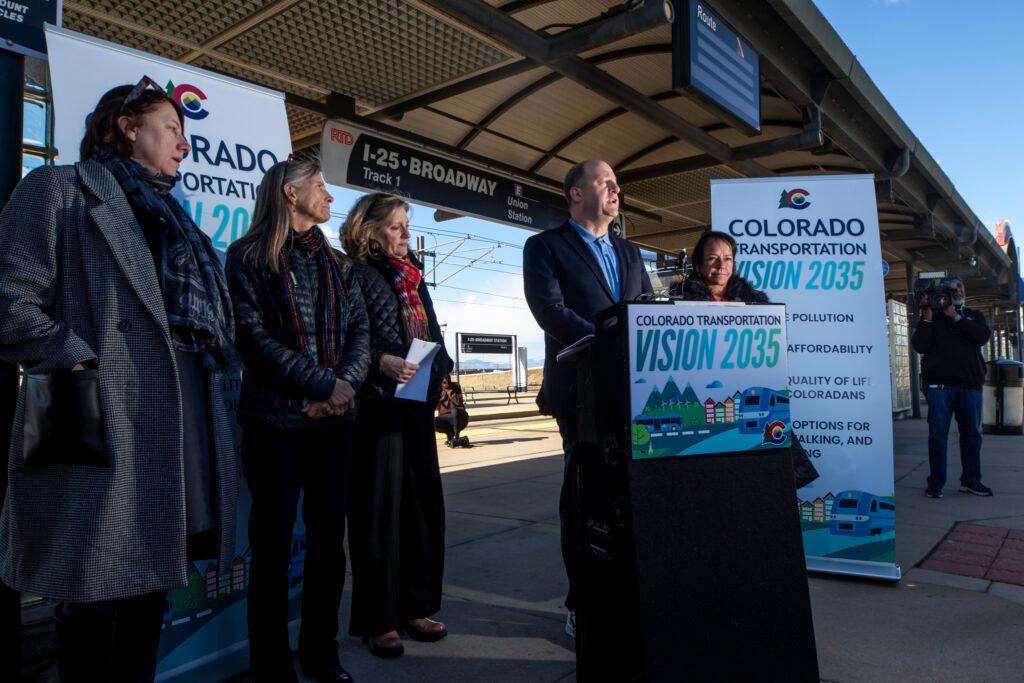
Asked whether he’s worried about possible cuts to federal transit spending, Polis said he was “very happy” with the state’s progress on landing federal dollars in recent years.
“No matter what the tides of change are in Washington, we look forward to pursuing every opportunity we can to gain additional funding for our state,” he said.
Polis and state transportation planners are hoping to land big federal dollars for at least one bus rapid transit line and the ambitious Front Range passenger rail project. Polis said Tuesday that the rail project could still be viable even if massive federal grants never materialize, citing fee revenue from the new rental car and oil and gas fees and a recent $66 million federal grant for rail infrastructure.
“We fully expect that we'll be able to get the Front Range passenger rail done,” he said.
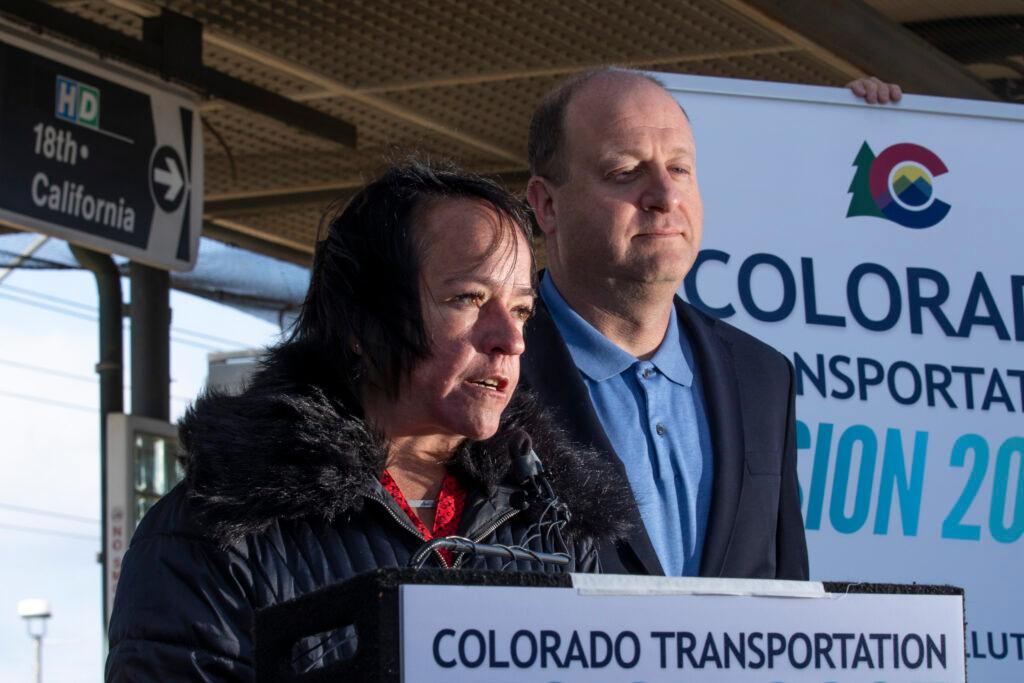
It appears as though the Denver metro’s first bus rapid transit line, which just broke ground on East Colfax Avenue, will be protected from any fiscal changes at the federal level. The $150 million federal grant for that project is “in the bank,” Jonathan Stewart, director of the Colfax bus rapid transit program said at a Denver Department of Transportation and Infrastructure advisory committee meeting last week.
“I'm not going to say never, but it would start a lawsuit if [the Federal Transit Administration] withdrew funding at this point after committing the funding,” Stewart said. “It would be an unprecedented event. So I feel comfortable and FTA also feels comfortable that this money is fully committed.”
On the whole, though, Polis’ vision document says “new investments and actions at all levels of government” will be necessary to meet the pollution reduction goals. State Sen. Faith Winter, D-Broomfield, told reporters that, “It’s time to take this [vision] and turn it into action.”



